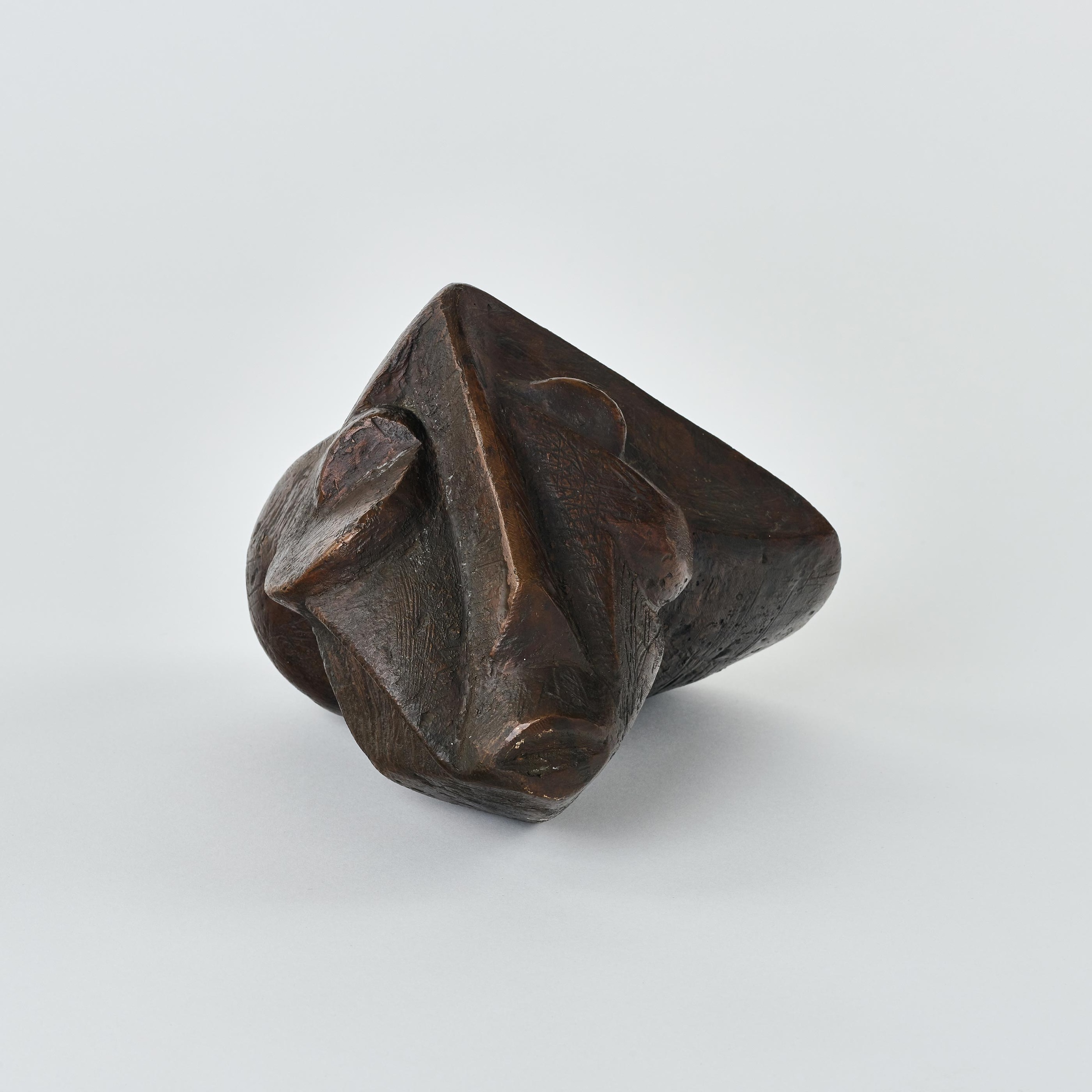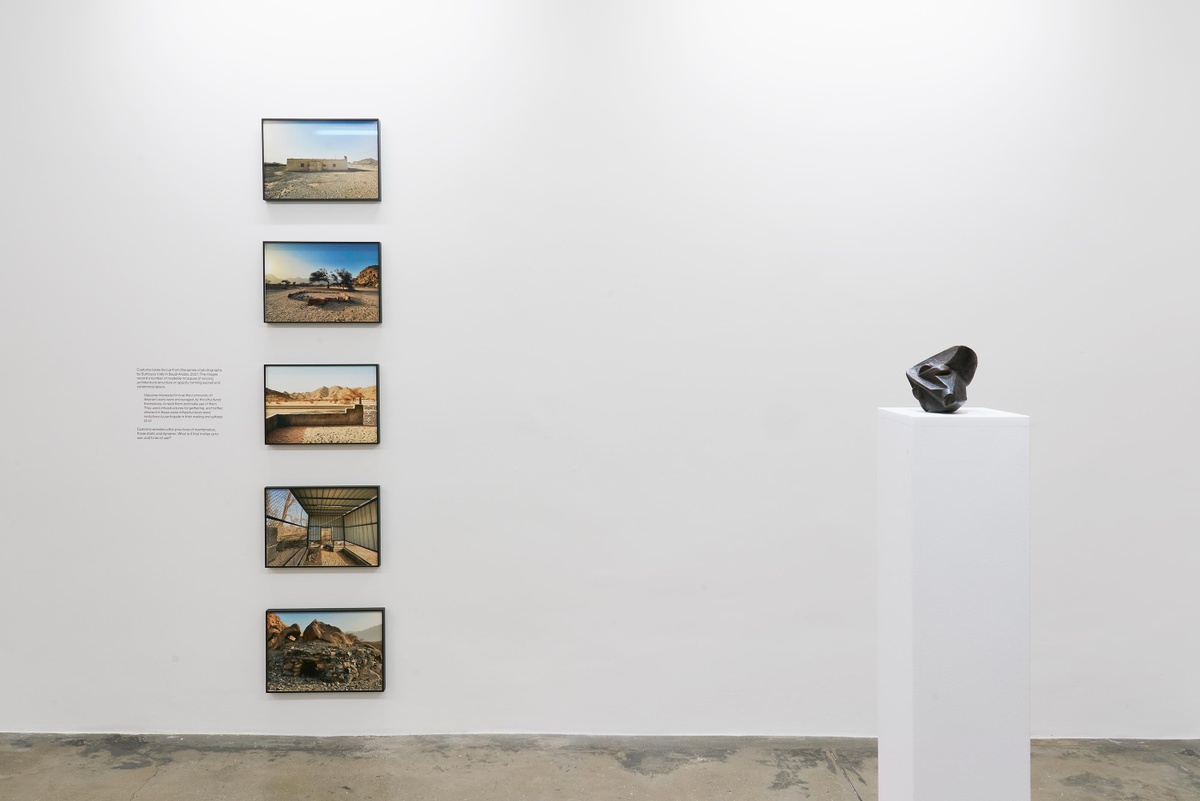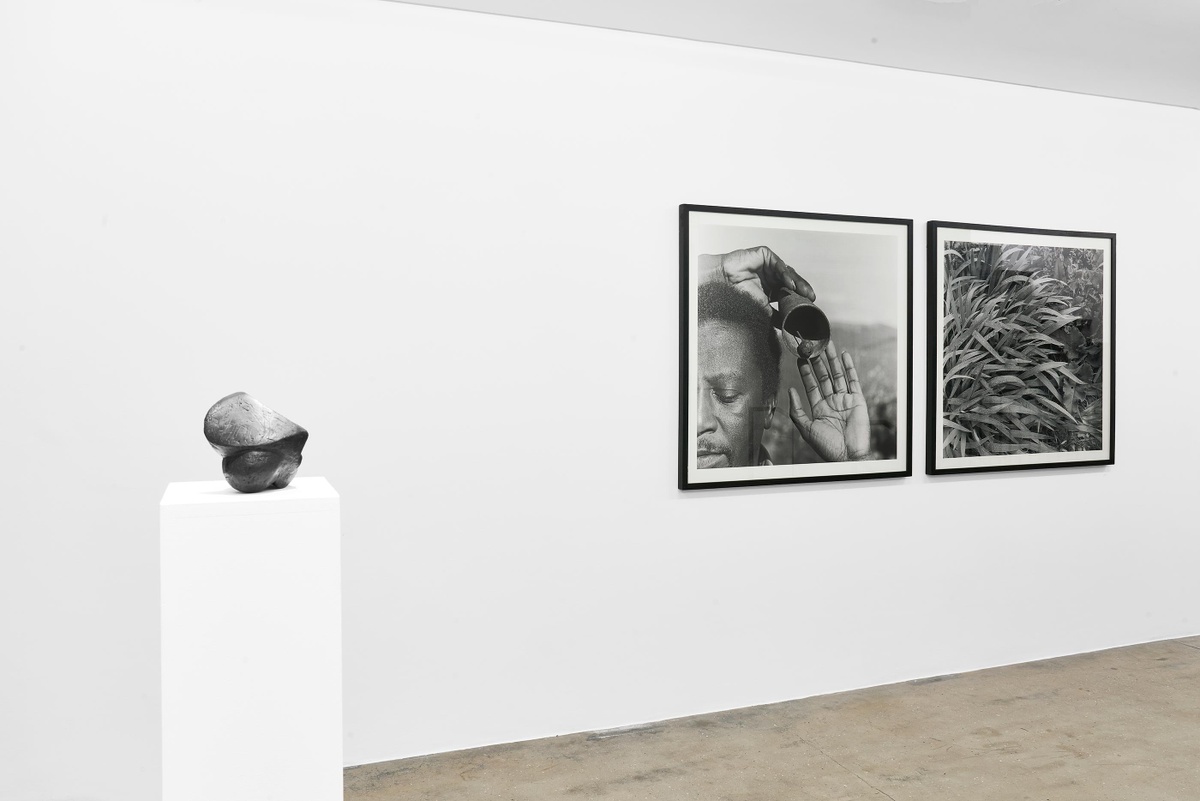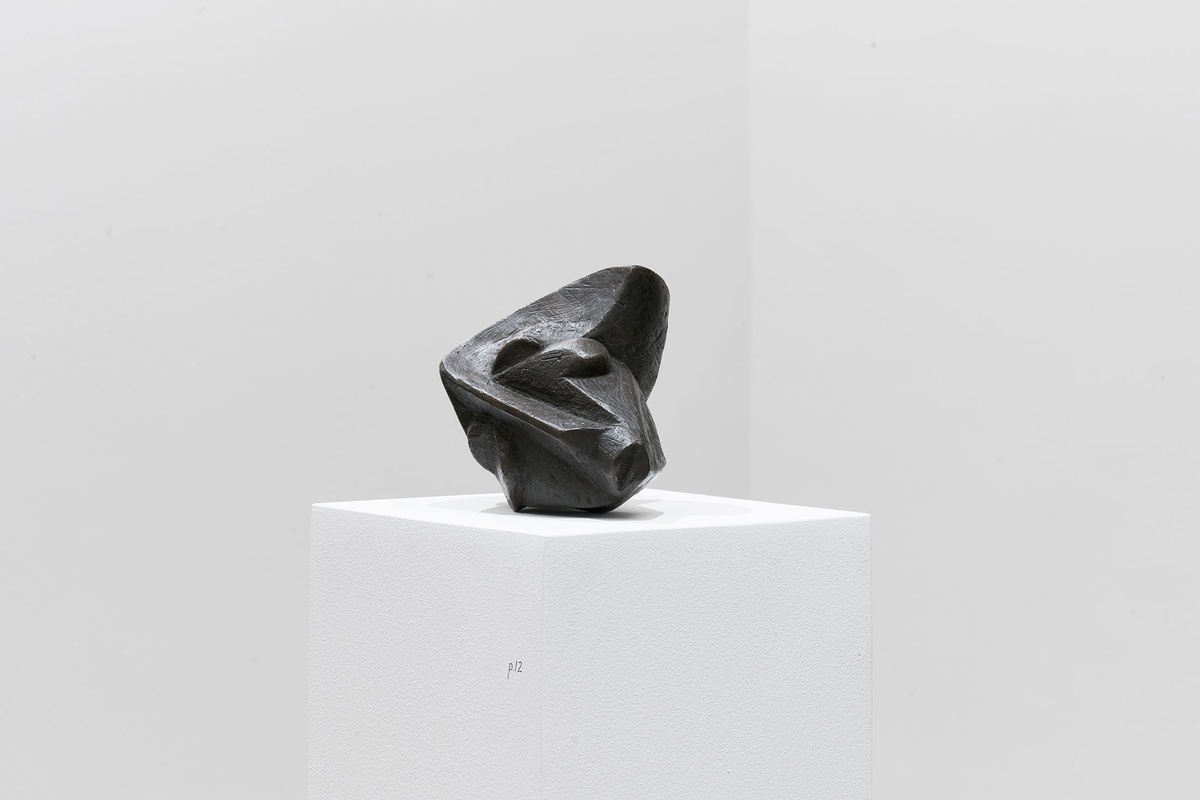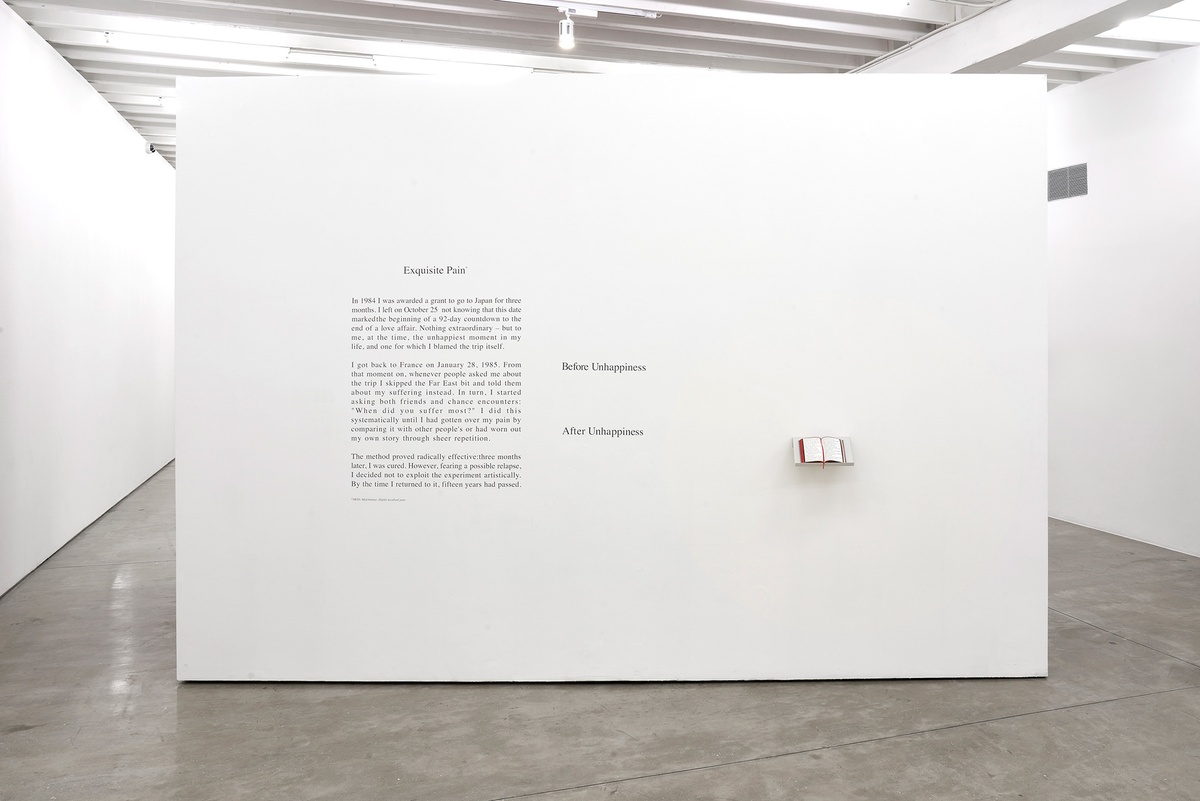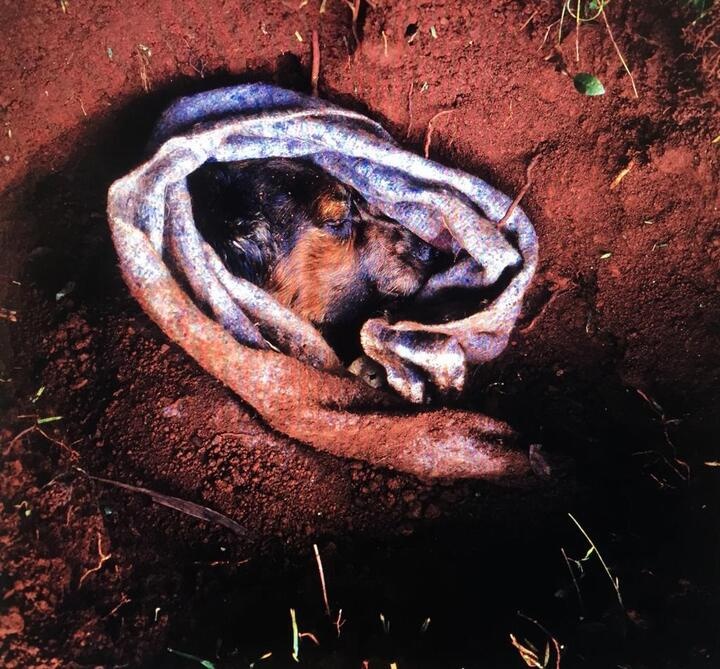Ezrom Legae
Face is a small, studied work in bronze. Its subject – an abstracted head represented by geometric shapes that abut and adjoin at irregular vertices – exudes emotional potency. Face forms part of Legae’s long-running series of stylised heads within totem-like compositions. Moulded in terracotta before being cast in bronze, the artist pursued a balance between supple lines and hard-edged rigidity. As three-dimensional objects encountered in the round, the works are small enough to feel portable, like artefacts carried across time and place. Is it that Face asks to be handled, or that we want to touch? It seems to tell of acquisitiveness, of possession. Historian EJ de Jager wrote of Legae’s work, “one becomes aware that an ordinary physical substance is being transformed into something spiritual and meaningful."
b.1938, Vrededorp; d.1999, Johannesburg
Ezrom Legae’s trajectory as an artist runs parallel to that of Sydney Kumalo, another South African sculptor represented in this collection. Like his contemporary, Legae studied under Cecil Skotnes at the Polly Street Art Centre in Johannesburg, and later replaced Kumalo as the Centre’s senior black art educator in 1965. The two men, for all the apparent similarities in their figurative bronze sculptures, their shared influences and aesthetic references, pursued their medium to different ends. Where Kumalo was, above all, preoccupied with formalism, Legae’s work was concerned with transcribing the socio-political moment into visual metaphor. He was, in addition to sculptor, a prolific draughtsman. Legae’s works on paper are evocative of the degradation of black lives under apartheid with dark, phantasmagorical scenes of violence. His sculptures, however, are less explicit in their invocations. Perhaps it is the heaviness of the bronze that lends his sculpted works their studied quiet, or perhaps the images of nightmares are, by their nature, better suited to drawings. Regardless, both Legae’s sculptures and drawings share a psychological intensity emblematic of the time, if only in different registers.
